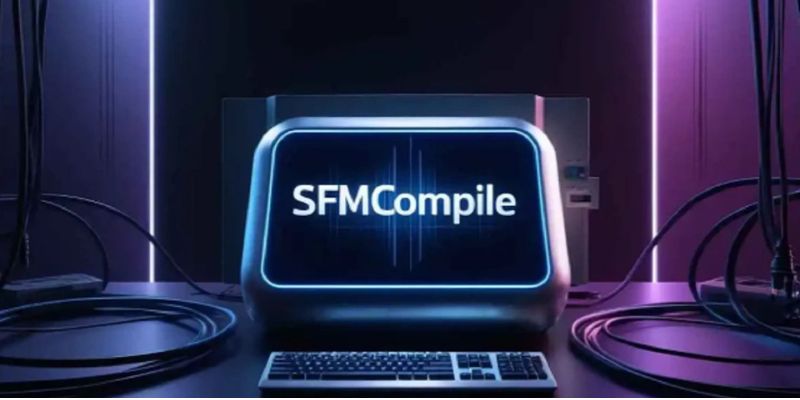Introduction to SFM Compile
If you’re working with Source Filmmaker (SFM), understanding the sfm compile process is essential for creating high-quality animations, models, and cinematic sequences. The term sfmcompile refers to the transformation of raw assets—including textures, models, and animations—into a format optimized for the Source Engine. Whether you are developing a detailed cinematic animation or preparing game-ready models, proper compilation ensures that assets function seamlessly within the engine.
However, many users encounter sfm compile issues, such as crashes, missing textures, and failed compilation messages. This guide explores what sfm compile is, how to troubleshoot common errors, and best practices to ensure a smooth workflow. By following this comprehensive tutorial, you’ll be able to avoid pitfalls and optimize your SFM projects effectively.
What is SFM Compile?
In Source Filmmaker (SFM), sfm compile refers to the process of converting raw assets into an engine-compatible format. This ensures that models, textures, and animations function properly when rendered. The compilation process typically includes the following:
1. Compiling Models
Transforms 3D models into the .MDL format, making them usable within the Source Engine.
2. Compiling Textures
Converts raw image files into .VTF (Valve Texture Format) for proper rendering within SFM.
3. Compiling Animations
Processes motion data into playable sequences, ensuring that character movements and object animations work smoothly.
4. Rendering Scenes
Exports fully animated sequences into high-quality video formats, bringing your cinematic vision to life.
Why is this process crucial? A well-compiled asset ensures that it behaves correctly in SFM, preventing errors, graphical glitches, or incompatibility issues.
Common SFM Compile Errors and How to Fix Them
Despite its importance, sfm compile can often result in errors. Below are the most frequent issues and their solutions.
1. “SFM Compile Failed” Error
One of the most common problems encountered is the “SFM Compile Failed” error message. This typically arises due to missing files, incorrect file paths, or unsupported formats.
Solution:
- Double-check that all required files (models, textures, animations) are present.
- Ensure file paths are correct and free of typos.
- Verify that you are using supported formats (.SMD, .DMX, .VTF).
2. Textures Not Appearing After Compilation
Sometimes, compiled textures may appear as a pink-and-black checkered pattern, indicating missing or improperly linked textures.
Solution:
- Make sure textures are correctly referenced in the .QC file.
- Convert image textures into .VTF format using VTFEdit.
- Place the textures in the correct directory (materials/models/your_model/).
3. “Error: Model Not Found” After SFM Compile
If your model fails to load post-compilation, this usually results from incorrect model paths or missing materials.
Solution:
- Open the .QC file and verify that directory references are accurate.
- Confirm that the .MDL file is correctly placed within the models/ directory.
- Re-run sfm compile with the necessary file dependencies.
4. Crashes During SFM Compile
SFM crashes during the compilation process can be caused by memory limitations, incorrect model scaling, or outdated graphics drivers.
Solution:
- Reduce model complexity by lowering the polygon count.
- Allocate more virtual memory to SFM.
- Update GPU drivers and ensure sufficient RAM is available.
Best Practices for a Successful SFM Compile
To avoid errors and ensure a smooth sfm compile process, follow these best practices:
1. Organizing Your Project Files
A well-structured directory minimizes errors. Use a logical file structure like:
- models/your_project/
- textures/your_project/
- sounds/your_project/
2. Using Proper Export Settings
When exporting from Blender, Maya, or 3ds Max, follow these guidelines:
- Save models in .SMD or .DMX format.
- Ensure the skeleton is correctly rigged.
- Properly set up normals and smoothing groups.
3. Testing Before Full Compilation
Before executing a full sfm compile, test smaller sections to detect issues early. Use:
- The SFM Console for debugging.
- The Half-Life Model Viewer (HLMV) to preview models.
4. Optimizing Performance
- Keep texture sizes at 2K or 4K (avoid unnecessary high-resolution textures).
- Utilize LOD (Level of Detail) models for optimized rendering.
- Avoid high-poly models unless needed for close-up shots.
Advanced SFM Compile Tips
Using Crowbar for Model Compilation
Crowbar is an essential tool for decompiling and compiling Source models, making sfm compile easier by providing automation and debugging options.
Automating SFM Compile with Scripts
If you compile models frequently, use batch scripts to automate the process. Example script:
@echo off
cd /d “C:\Program Files (x86)\Steam\steamapps\common\SourceFilmmaker\game\bin”
studiomdl.exe -game “C:\Program Files (x86)\Steam\steamapps\common\SourceFilmmaker\game\usermod” mymodel.qc
This script simplifies the compilation workflow, saving time.
Troubleshooting SFM Compile Logs
When sfm compile fails, checking logs is crucial. Logs provide details on missing files, syntax errors, and incompatibilities.
FAQs on SFM Compile
What is the purpose of sfm compile?
SFM Compile converts raw models, textures, and animations into a format compatible with the Source Engine, ensuring they function correctly in SFM.
Why does sfm compile fail?
Failure occurs due to missing files, incorrect paths, incompatible formats, or memory limitations.
How can I fix texture errors after sfm compile?
Ensure textures are referenced correctly in .QC files, convert them to .VTF format, and store them in the proper materials/ directory.
How can I prevent SFM crashes during compilation?
Reduce model complexity, allocate more virtual memory, and update GPU drivers.
What tools help with sfm compile?
Tools like Crowbar, VTFEdit, and Half-Life Model Viewer (HLMV) assist with model compilation and debugging.
Conclusion
Mastering sfm compile is crucial for animators, game modders, and machinima creators working with Source Filmmaker. By following the best practices outlined in this guide, troubleshooting errors efficiently, and leveraging advanced tools like Crowbar and scripting automation, you can streamline your SFM workflow and produce high-quality animations effortlessly.
With proper file organization, optimized models, and efficient testing methods, you’ll save time and enhance the quality of your SFM projects, making them look professional and polished.


